Sigma SD10Sigma's digital SLR uses Foveon's latest "X3" sensor technology to boost ISO and reduce image noise.<<SD10 Photo Gallery! :(Previous) | (Next): Print-Friendly Review Version>> SD10 Sample ImagesReview First Posted: 10/26/2003 |
Digital Cameras - Sigma SD10 Digital SLR Test Images
| I've begun including links in our reviews to a Thumber-generated index page for the test shots. The Thumber data includes a host of information on the images, including shutter speed, ISO setting, compression setting, etc. Rather than clutter the page below with *all* that detail, we're posting the Thumber index so only those interested in the information need wade through it! |
| IMPORTANT: Image processing notes for the sample photos below:
As described in the main review text, the Sigma SD10 doesn't generate JPEG images itself, but rather "raw" files which must be processed through the (excellent) Photo Pro software to create final JPEG files readable by other applications. In the process, a very broad range of image parameters can be manipulated, including contrast, brightness, color saturation, white balance, and sharpness. The software also includes an "auto" mode that attempts to adjust these parameters to produce an "optimum" image, correcting for extreme contrast, over- or underexposure, color casts in the scene lighting, etc. My policy in showing sample camera images has always been to display the images exactly as they come from the camera, without the benefit of "digital darkroom" work having been performed on them. In my view, this is the only way to fairly compare the results produced by different cameras. In the case of the SD10, since all of its images must pass through the Photo Pro application, there's a natural tendency on the part of reviewers to want to enhance the results beyond what the camera itself produced. While it might be instructive to see what can be done with the SD10's images in Photo Pro, to be fair, if one takes this approach, you'd have to also manipulate images shot by other cameras in Photoshop or another imaging application before making any comparison with SD10 images manipulated in Photo Pro. As they say, "therein lies madness:" Once one allows manipulation of images as part of a comparative analysis, any trace of objectivity or basis for comparison is lost. Accordingly, all the images below are processed from the SD10's X3F raw files using the camera's defaults. Since the raw images rendered with Photo Pro's sharpening slider set to zero are rather soft, I've also provided "sharpened" versions, for which the sharpness control was set to +1. Since I think that most users will opt for at least some sharpening by default, I present the sharpened versions of the images as the primary selections for each test. Photo Pro also has an "auto" option that attempts to adjust the images for pleasing results. Some reviewers of the earlier SD9 camera model showed a strong preference for Auto processing, but I personally found its operation to be too unpredictable to merit inclusion of its results for our main test images here. The only exceptions to this approach are the examples below which show the action of the "Fill Light" feature in Photo Pro, a surprisingly effective tool for mimicking the action of a fill reflector or fill light to open the shadows. |
| Outdoor Portrait:
Excellent resolution and detail, with crisp, clear definition. Pretty accurate color, although slight color casts with each white balance setting. The extreme tonal range of this image makes it a tough shot for many digicams, which is precisely why I set it up this way, and why I shoot it with no fill flash or reflector to open the shadows. The object is to hold both highlight and shadow detail without producing a "flat" picture with muddy colors, and the SD10 handled the challenge pretty well. The shot at right was taken with a +0.3 EV exposure compensation adjustment, slightly less than this shot requires with most cameras I test. Midtones are reasonably bright, yet detail is held in all but the strongest highlights. Though the overall color balance is just a little cool, I preferred the overall color of the Auto (sharpened / unsharpened) white balance to the much warmer tone of the Manual (sharpened / unsharpened) setting. (The Daylight [sharpened / unsharpened] setting resulted in a slightly reddish cast.) Skin tones are nearly accurate, although a little pale, and the blue flowers in the bouquet are a bit darker than in real life. (Many digicams have trouble accurately producing this blue. In reality, these flowers are a light navy blue, with just hints of purple in them.) Color is good throughout the rest of the frame, with good saturation. Resolution is excellent, with a lot of fine detail visible in Marti's face and hair, as well as in the flower bouquet and house siding. Shadow detail is also excellent, with very low noise. Details are also nice and sharp, with great definition. - Overall, this image supports my contention that the SD10 shows resolution roughly equal to that of a camera with a conventionally-striped six-megapixel sensor. (A note on the exposure and lighting here - This is a shot taken outdoors, because I haven't previously been able to duplicate the extremely strong, harsh lighting of full sunlight in the studio. While this does give me the benefit of very harsh lighting for my tests, the downside is that the lighting can change a fair bit depending on time of year and weather conditions. In this shot, a tree that's gradually been growing off to the left of the scene is starting to make its presence felt in late fall/winter shots now, at the time of day when the sun angle is correct for the shot to be taken. The situation is (barely) tolerable now, but in the near future, I'll be moving this shot indoors to the studio, using a new light source I'm building. (That will hopefully not torch my studio when I finally fire it up.) No ETA on the advent of the new light source, as I need to finish the move our new studio first, and that's not scheduled to be complete until sometime in December.) To view the entire exposure series from zero to +1.0 EV, see files SD10OUTMP0s.HTM through SD10OUTMP3s.HTM on the thumbnail index page. (Unsharpened versions are those with the "us" suffix.) |
||||||||||||||||||
| Closer Portrait: 
Outstanding resolution and detail. I again chose the Auto white balance setting for this close-up shot, and the cool cast seen in the full-length shot happily doesn't appear as strong here, resulting in very natural skin tones. The shot at right was again taken with a +0.3 EV exposure compensation adjustment, which produced good midtones albeit at the cost of more lost detail in the bright highlights. Detail is outstanding, with great definition in Marti's face and hair, as well as in the tiny details of her necklace. Details are again very sharp, with excellent definition even in the dark shadows. (Here are sample images at the sharpened
and unsharpened
settings.) To view the entire exposure series from zero to +1.0 EV, see files SD10FACAP0s.HTM
through SD10FACAP3s.HTM on the thumbnail index page. According to Foveon's press information, the filter operates (for positive values) by boosting contrast of both highlights and shadows, while brightening shadow areas of the picture and darkening the highlights slightly to prevent them from blowing out. (The latter supporting my observation above about the reduced maximum highlight values.) Negative settings have the opposite effect, and Foveon's press materials suggest that in some images, the negative settings may serve to reduce noise in shadow areas. With stronger applications of the filter (particularly on the negative side of the scale), you can begin to see how application of the filter is feathered to prevent abrupt changes across the image. Strong positive amounts produce an almost "solarized" effect that could almost be artistic, albeit perhaps somewhat unintentionally so... (as in the images below) Bottom line, I don't know that I'd say that the Fill Light feature is enough of a reason all by itself to justify buying an SD10, but it comes close. :-) (Current SD9 owners will be pleased to learn that Photo Pro 2.0, including the Fill Light feature, will be available as a no-cost download.) |
||||||||||||||||||
| Indoor Portrait, Flash:
Good intensity and coverage with an external flash unit, pretty good color from the Flash white balance setting. The SD10 has a top-mounted external flash hot shoe, but does not feature a built-in flash. I captured the image at right using Sigma's new EF500 DG Super SA-N flash unit, with the camera's white balance set to Flash. The color is about right, although Marti's the white shirt has a slight pink tint and the blue flowers are a little purplish, both effects no doubt caused by the relatively bright incandescent room lighting. Bouncing the flash off of the ceiling, with a piece of paper held slightly in front of it to provide some direct/diffused light resulted in very even lighting, without any harsh shadows. (Demonstrating yet again why I feel that a good external flash unit should be considered almost a mandatory addition to any serious enthusiast's digicam kit.) For what it's worth, the EF500 DG SA-N flash seems to be a very capable unit, with a zooming flash head that matches the lens focal length being used, true TTL (through the lens) metering capability on the SD10, as well as the ability to provide wireless TTL metering when used in conjunction with other SA-N units. (The wireless TTL capability is only available with the SA-N model, not the ST-N, and only with the SD10, not the earlier SD9 camera.) |
||||||||||||||||||
| Indoor Portrait, No Flash:
Slight color casts with each white balance setting tested, moderate underexposure, and very ruddy skin tones. This shot is always a very tough test of a camera's white balance capability, given the strong, yellowish color cast of the household incandescent bulbs used for the lighting. The SD10's white balance system had a slightly difficult time here, and produced fairly pronounced color casts. The Auto (sharpened
/ unsharpened)
and Incandescent
(sharpened
/ unsharpened)
settings both produced warm images, the Incandescent setting with a stronger
reddish cast. I chose the Manual
(sharpened
/ unsharpened) setting for the main series, though it had a strong magenta cast. The shot at right was taken with a +1.7 EV (sharpened
/ unsharpened) exposure compensation adjustment, and even so is still slightly dark. However, the highlights of the white shirt are almost too bright.
|
||||||||||||||||||
| House Shot:
Excellent resolution and detail, with accurate color as well. The SD10's white balance system did a good job here, producing pretty accurate color at all three settings tested. I chose the Auto
(sharpened
/ unsharpened) setting for the main shot, although the Manual
(sharpened
/ unsharpened)
setting produced very good results as well. The Daylight
(sharpened
/ unsharpened) setting was just a little warm. Resolution is excellent, with lots of fine detail visible in the tree limbs and front shrubbery. Details are also very crisp, with great definition from corner to corner. (The SD10's high-resolution CCD probably stretches the limits of this poster as a test target. Even though the poster was made from a 500MB scan of a 4x5 negative shot with a tack-sharp lens, the camera is close to extracting all the detail that's to be found here.)
To my eye, the above shows that the SD10 comes very close to the resolution delivered by a good-quality SLR with a 6-megapixel conventionally striped sensor chip. I think that the two images here are very close to each other, in terms of the resolution delivered, but feel that the EOS-10D has a (very) slight edge. (Both of these shots were captured using the cameras' default sharpening settings. All images were tweaked very slightly with further unsharp masking in Photoshop, but most particularly those that were resampled, to overcome the edge premphasis applied by the camera's sharpening algorithm that was diminished in the resampled versions. The tone curve of the shot from the EOS-10D was adjusted slightly to render the sky with the same brightness as in the SD10 image, to avoid perceptual bias caused by differing background brightness. If I get time, I'll try to repeat this example with the SD10 against the EOS Digital Rebel, probably its closest competitor in the marketplace, with both cameras set to minimum sharpening and all sharpening applied in Photoshop. - I believe that the main impact of this will be to favor the Canon camera though, since in the shots above, some excess sharpening is evident in the shot from the 10D. I don't expect the bottom line to change by much though, the result will remain that the SD10 will show almost as much detail as a high-quality camera with a six-megapixel conventionally striped sensor.) |
||||||||||||||||||
| Far-Field Test 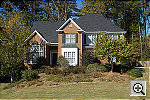
Excellent resolution and detail, with good dynamic range. This image is shot at infinity to test far-field lens performance. NOTE that this image cannot be directly compared to the other "house" shot, which is a poster, shot in the studio. The rendering of detail in the poster will be very different than in this shot, and color values (and even the presence or absence of leaves on the trees!) will vary in this subject as the seasons progress. In general though, you can evaluate detail in the bricks, shingles and window detail, and in the tree branches against the sky. Compression artifacts are most likely to show in the trim along the edge of the roof, in the bricks, or in the relatively "flat" areas in the windows. This is my ultimate "resolution shot," given the infinite range of detail in a natural scene like this, and the SD10 performs very well. Detail is very strong in the tree limbs over the roof, as well as in the fine foliage in front of the house, with great definition in the subtle leaf patterns. Details are also crisp throughout most of the frame, though some of the fine foliage in front of the house is a bit soft. (Click here for sample images with and without sharpening.) Here again, the SD10 performs far above the 3.4 megapixel resolution of its sensor array, resolving detail roughly equivalent to that of a 6 megapixel camera with a conventional sensor. The camera picks up good detail in the bright white paint surrounding the bay window, a trouble spot for many digicams. Detail is also strong in the shadow area above the front door, further evidence of the SD10's good dynamic range. Overall color looks good, and exposure is about right. The table below shows a standard resolution and quality series, followed by an ISO series. Resolution Series:
ISO Series:
|
||||||||||||||||||
|
Lens Zoom Range Excellent results with a 20-40mm zoom lens. I routinely shoot this series of images to show the field of view for each camera, with the lens at full wide angle, at maximum telephoto, and at full telephoto with the digital zoom enabled, if digital zoom is an option. (Like other digital SLRs, the SD10 doesn't have a digital zoom option, no loss at all IMHO.) Since the SD10 accommodates a wide range of lenses, this test is really a little pointless, but since I had Sigma's 20-40mm zoom on the camera anyway, I decided to go ahead and shoot the pair of shots below to show its range. Following are the results at wide angle and telephoto with the 20-40mm:
|
||||||||||||||||||
| Musicians Poster
Pretty good color overall, with excellent resolution. This shot is often a tough test for digicams, as the abundance of blue
in the composition frequently tricks white balance systems into producing
a warm color balance. The SD10's Manual (sharpened
/ unsharpened)
white balance setting did the best job here, despite slightly pale skin
tones. The Auto
(sharpened
/ unsharpened)
setting was too cool, and the Daylight (sharpened
/ unsharpened)
setting was too warm. The blue robe looks pretty good, though a slight
magenta cast gives the deep shadow areas purplish tints. Resolution is
again excellent, with great detail in the embroidery of the blue robe,
as well as throughout the frame. (The original data file for this poster
was only 20MB though, so cameras like the SD10 are definitely capable
of showing more detail than the poster has in it.) |
||||||||||||||||||
|
Macro Shot (Since the SD10's macro performance depends entirely on the lens you happen to be using, there's no point in including a macro shot here...) |
||||||||||||||||||
| "Davebox" Test Target
Accurate color, but underexposed at the default setting. The SD10's Manual
(sharpened
/ unsharpened)
white balance setting did the best job here, producing the most accurate
white value on the large white color block and mini resolution target.
The Auto
(sharpened
/ unsharpened)
setting was just slightly warm, and the Daylight
(sharpened
/ unsharpened) much more so. The target was underexposed a bit at the default
setting (sharpened
/ unsharpened), so I used a +0.3 EV exposure compensation adjustment for the samples here. The SD10 distinguished the subtle tonal variations of the Q60 target well, despite the exposure increase, while the shadow area of the charcoal briquettes shows a lot of fine detail, with very low noise. The large color blocks are also about right, with accurate hues and good saturation.
|
||||||||||||||||||
|
Low-Light Tests Surprisingly good low-light performance, with good color (although there's a noticeable yellow color cast at the darker light levels). Also, good autofocus performance down to about 1/8 foot-candle. After-dark photography is where you'll see the biggest difference between the SD10 and the previous SD9. The earlier model was for all intents and purposes useless for shooting in anything other than fairly bright daylight. By contrast, the SD10 is a respectable low-light performer, although its noise levels on long exposures are still much higher than most other digital SLRs I've tested. (The SD10's low-light AF performance was also improved pretty dramatically over that of the SD9, extending down to about 1/8 foot-candle, from the previous limit of roughly 1 foot-candle -- a 3-stop improvement.) The SD10 performed pretty well in my low-light tests, capturing bright, usable images down to the 1/16 foot-candle (0.67 lux) limit of the test, with good color at all four ISO settings. Color balance was pretty accurate most of the time, although I noticed a strong yellow color cast at the lowest light levels. Still, performance was pretty good. Noise was low at the lower sensitivity settings and at shorter exposure times, but increased quite a bit at the 800 and 1,600 ISO settings, as well as with longer exposures.
|
||||||||||||||||||
|
Flash Range Test The SD10 does not feature a built-in flash unit, so there's nothing to report for this test. |
||||||||||||||||||
|
ISO-12233
(WG-18) Resolution Test High resolution, 1,050 - 1,200 lines of "strong detail." The SD10 performed pretty well on the "laboratory" resolution test chart. It started showing minor artifacts in the test patterns at resolutions as low as 800 lines per picture height, in both horizontal and vertical directions. I found "strong detail" out to about 1,200 lines along the horizontal axis (vertically-oriented target elements) and to about 1,050 lines vertically (horizontally-oriented target elements). "Extinction" of the target patterns didn't occur until about 1,350 lines horizontally, 1,400 lines vertically. Chromatic aberration will be completely dependent on the lens being used, so once again this portion of my standard review format doesn't apply. (For what it's worth though, CA is very low on the 50mm f/2.8 macro I used to shoot this target with, showing only one pixel of coloration on either side of the target lines.) Resolution Series, Wide Angle
Sharpness Series
|
||||||||||||||||||
|
Viewfinder Accuracy/Flash Uniformity A very accurate viewfinder. The SD10 is a digital SLR, meaning that the optical viewfinder shows the actual view through the lens. (The LCD monitor is for image review and menu navigation only.) The SD10's viewfinder is very accurate, showing approximately 97 percent of the final frame area, better than average, even among SLRs. |
||||||||||||||||||
Reader Comments! --> Visit our discussion forum for the Sigma SD10!
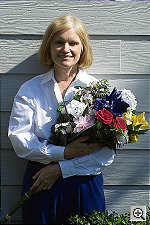








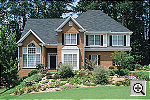
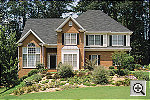
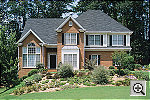
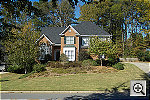
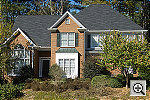



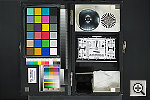
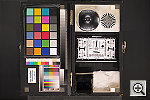
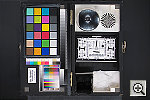
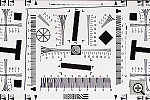
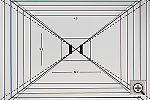

Follow Imaging Resource: